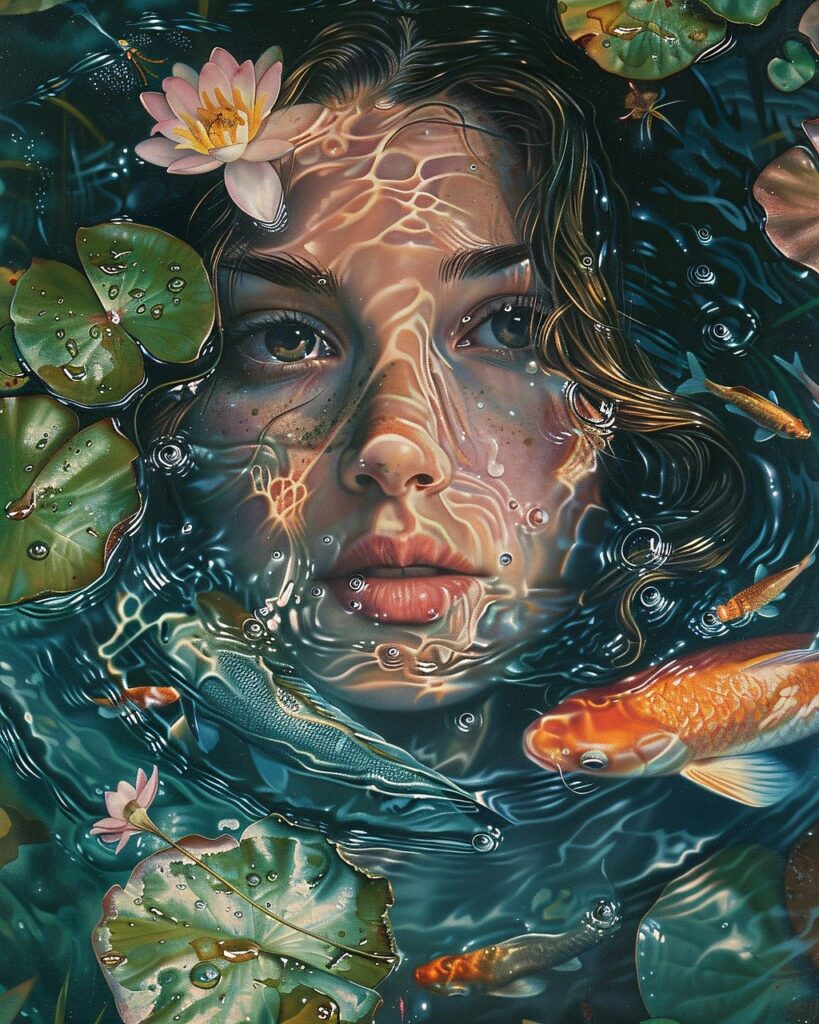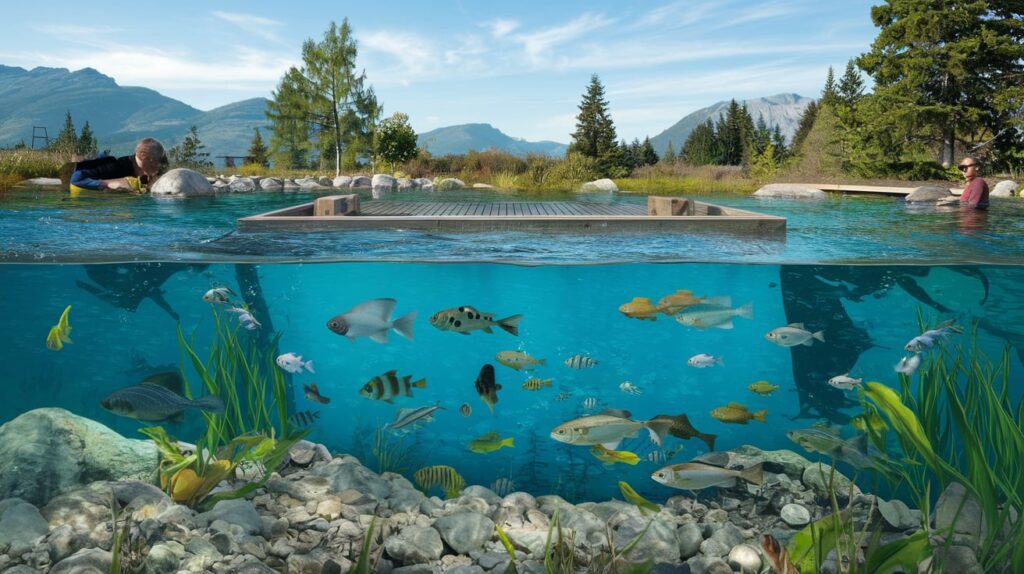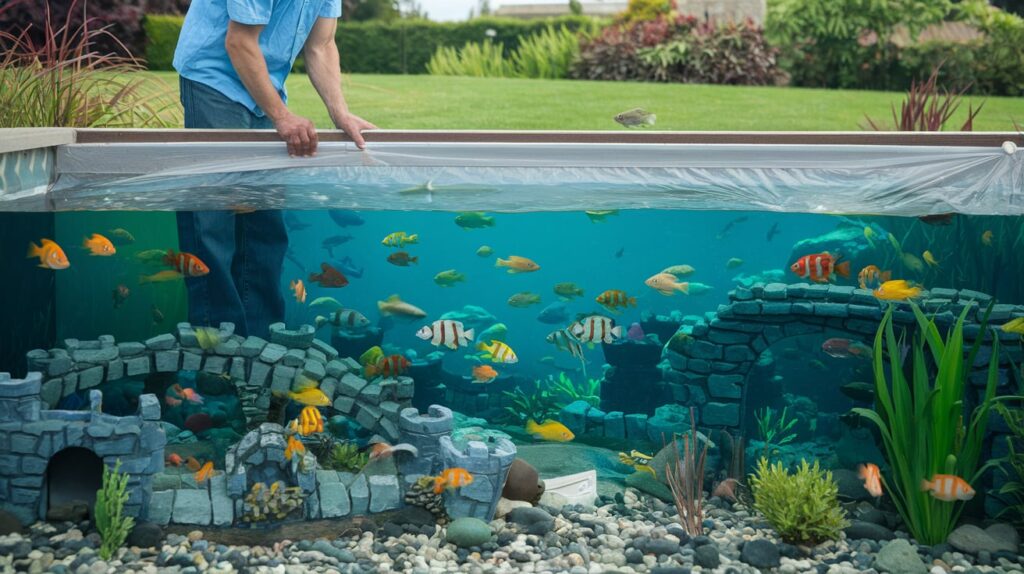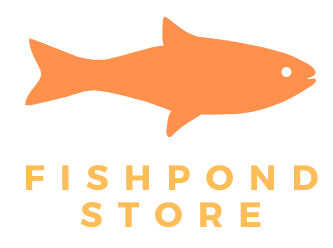Have you ever wondered how do fish reproduce in a pond? It’s a fascinating process that varies among species, and understanding it can give me a whole new appreciation for the aquatic life around me. Let’s take a closer look at this interesting topic and learn how fish reproduce in a pond setting.
The Basics of Fish Reproduction
When I think about fish reproduction, I like to start with the basics. Fish can reproduce in several different ways, but the most common method is through external fertilization. This means that the female lays eggs in the water, and the male fertilizes them outside of her body.
External Fertilization
This reproductive strategy involves the female fish releasing her eggs into the water while the male simultaneously releases sperm. The eggs are then fertilized in the surrounding water. This method requires a large number of eggs and sperm to increase the chances of successful fertilization, as many eggs are eaten by predators or fail to develop.
Internal Fertilization
While less common, some species of fish reproduce via internal fertilization. In this case, the male fish transfers sperm directly into the female’s body, where fertilization takes place. Following this, the female will then lay fertilized eggs, which may either hatch outside her body or remain inside until the young fish, called fry, are mature enough to swim away.
Types of Fish and Their Reproductive Strategies
Fish come in so many shapes and sizes, and their reproductive strategies can vary significantly. Let’s take a look at several types and how they reproduce.
Oviparous Fish
Oviparous fish lay their eggs in the water or attach them to surfaces, such as plants or rocks. After laying the eggs, they often do not provide any protection or care for them.
- Example Species: Goldfish and Salmon
- Egg Characteristics: Often sticky, allowing them to adhere to surfaces.
Ovoviviparous Fish
These fish give birth to live young after the eggs hatch inside the female’s body. The embryos develop in the eggs within the female until they are ready for birth.
- Example Species: Guppies and some species of sharks.
- Embryo Characteristics: They obtain nourishment from the yolk of the egg.
Viviparous Fish
Viviparous fish are similar to ovoviviparous species, but they provide additional nourishment to their embryos from the mother. This method usually results in fewer offspring but gives them a greater chance of survival.
- Example Species: Some species of eels and livebearers.
- Nourishment Characteristics: The embryos receive nutrients from the mother through the placenta.

The Role of Environmental Factors
As I continue to learn about fish reproduction, it’s clear that environmental factors play a huge role in determining how and when fish reproduce. Factors such as water temperature, pH levels, and even available food resources can influence this process.
Temperature
Temperature can significantly affect the reproductive cycles of fish. Many species have specific temperature ranges for successful spawning:
- Warm Water: In warmer temperatures, fish may spawn more frequently. This is often observed in tropical environments where water stays warm year-round.
- Cold Water: Some species may only spawn during specific seasons when temperatures are optimal, such as spring or early summer.
Water Quality
The quality of the pond water is essential for fish reproduction. Poor water quality can deter fish from spawning:
- pH Levels: Fish typically thrive in a pH range of 6.5 to 8.5. If the pH becomes too acidic or too basic, it may affect the health of the eggs.
- Dissolved Oxygen: Sufficient oxygen levels are necessary for the eggs and fry to survive. High levels of organic materials can reduce oxygen, causing issues with reproduction.
Available Food Resources
When the food is plentiful, fish are more inclined to reproduce. Food availability not only influences the overall health of the fish but also the number of eggs they will produce. A healthy environment can lead to more successful spawning events.
Spawning Behavior and Strategies
Once I’ve reviewed the basic reproductive methods, I’m intrigued by the various behaviors that fish exhibit during spawning. It’s quite the spectacle in many cases!
Courtship Rituals
Before laying eggs, many species engage in elaborate courtship rituals to attract mates. These can involve:
- Color Changes: Brightening of colors in males to attract females.
- Displays of Strength: Some male fish will display their strength by changing their positions or engaging in physical showdowns.
Nest Building
Certain species, like some types of cichlids, engage in nest building where they prepare a specific area in the pond to lay their eggs. This process can include:
- Creating a Depression: Males often create a shallow depression on the pond’s bottom.
- Using Materials: Some fish use gravel or vegetation to build their nests, offering protection to the eggs.
Parental Care
While many fish do not provide any care for their eggs, some species take it a step further and actively protect and tend to their young. This can be seen in:
- Nest Attendants: Certain fish will guard the nest and ensure predators stay away.
- Fry Protection: Some species will carry their fry in their mouths for protection until they are strong enough to fend for themselves.

The Life Cycle of Fish from Egg to Adult
Understanding the life cycle of fish is vital to comprehending their reproductive strategies. The journey they undertake from egg to adult is fascinating and fraught with challenges.
Egg Stage
After fertilization, fish eggs vary in size, shape, and color depending on the species. They can take anywhere from a few days to several weeks to hatch. Factors that influence hatching times include:
- Temperature: Warmer temperatures typically speed up the development.
- Water Quality: Poor conditions can lead to higher mortality rates during this stage.
Larvae Stage
Once the eggs hatch, the fish enter the larvae stage. Here, they rely on their yolk sac for nourishment as they begin to develop:
- Feeding: As they grow, they’ll gradually start to eat tiny organisms such as plankton.
- Growth Rate: Growth rates can vary significantly, influenced by food availability and environmental conditions.
Fry Stage
After a few weeks, the young fish become fry, and at this point, they begin to swim freely and actively feed on small food sources.
- Survival Rate: Not all fry will survive due to environmental stresses and predation, leading to a natural selection process.
- Schooling Behavior: Some fry will school together for protection.
Juvenile Stage
As they continue to grow, the fry reach the juvenile stage. They start to resemble adult fish and experience:
- Increased Independence: They begin to look for food on their own and establish their territories.
- Development of Coloration: Juvenile fish will start to develop their characteristic colors and physical features.
Adult Stage
Eventually, the fish reach maturity and can reproduce themselves. The time it takes to reach this stage varies widely between species:
- Small Species: Some species can mature in just a few months.
- Large Species: Others, like certain types of trout, can take several years.

The Impact of Seasonal Changes on Reproduction
Seasonal changes significantly influence fish reproduction, often acting as triggers for spawning behaviors. Each season has its distinct characteristics that can affect the lifecycle of fish.
Spring
For many fish species, spring serves as the prime time for reproduction. As the temperature rises and sunlight increases, fish are encouraged to spawn:
- Triggering Factors: Warmer waters and longer daylight hours signal to fish that it’s time to reproduce.
- Common Activities: Spawning behaviors are often observed, with males competing for females.
Summer
In summer, many fish continue to spawn. However, as the heat intensifies, some species may alter their reproductive activities:
- Water Temperature: If the water temperature becomes too warm, some fish may stop spawning entirely.
- Food Growth: Conversely, the abundance of food can encourage fish to continue reproducing.
Autumn
As autumn arrives, many fish prepare for the colder months ahead, and spawning activities start to decline:
- Temperature Drop: Decreasing temperatures signal to fish that it’s nearing the end of their reproductive cycle.
- Preparation for Winter: Fish may focus on feeding rather than spawning during this season.
Winter
During winter, many fish enter a dormant state. Most will not reproduce until spring returns:
- Stable Temperatures: Cold temperatures create conditions that are not conducive to spawning.
- Reduced Activity: Many fish become less active and conserve energy.

Conclusion: How Do Fish Reproduce In A Pond?
Understanding how fish reproduce in a pond is an engaging topic that interconnects various aspects of aquatic life and environmental conditions. Whether through elaborate courtship rituals or protective parenting behaviors, fish demonstrate a remarkable range of strategies that ensure the continuation of their species.
By paying attention to environmental factors, seasonal changes, and the diverse reproductive methods employed by different species, I feel better equipped to appreciate the complexities of life in the water. The next time I visit a pond, I’ll certainly look closer at the intriguing world of fish and their fascinating reproductive journeys!
